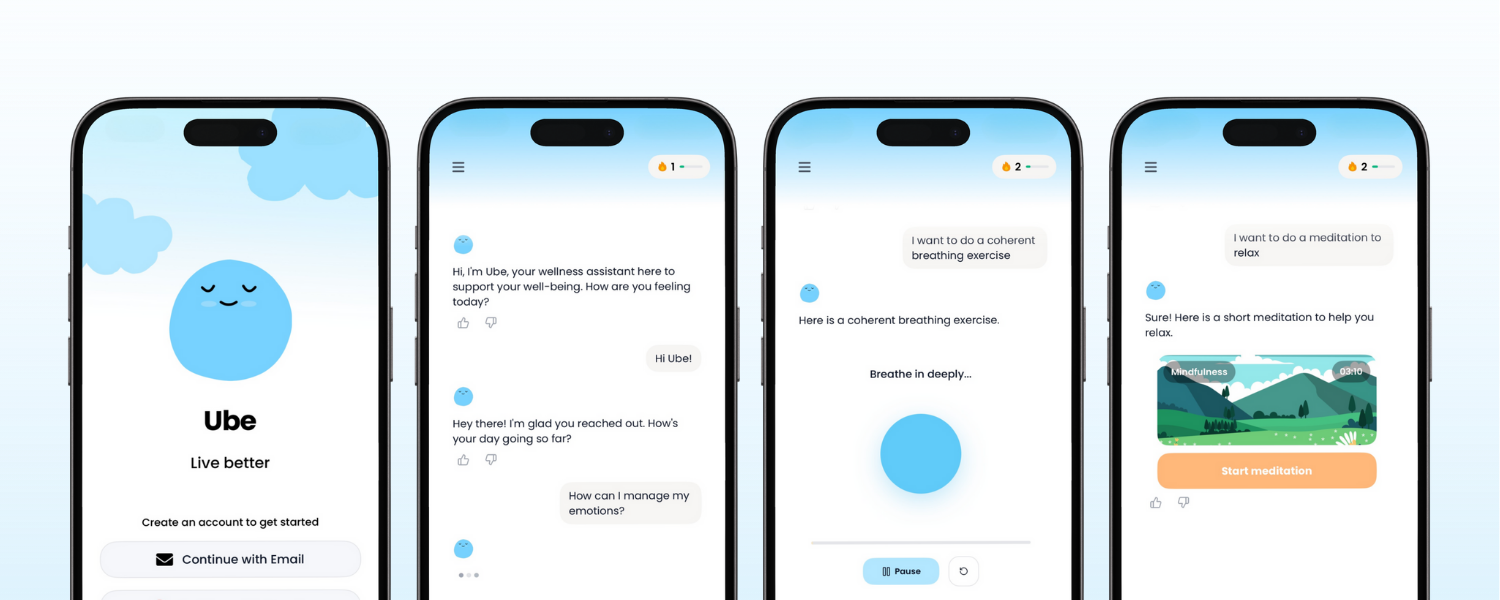Feeling wired and unsteady can make the minutes stretch like hours, which is exactly why people search for how to calm anxiety fast. You need something that works right now, not a long lecture on lifestyle change. In the next few minutes, you will learn simple, evidence-shaped tactics that shift your body and attention quickly, so you can move from spiraling to steady. We will cover how to interrupt the stress response, a five-breath reset, practical grounding and posture cues, and a way to unhook from racing thoughts without arguing with them. Keep what works, discard what does not, and trust that small steps compound into real anxiety relief.

Why your body panics and how to interrupt it?
When anxiety surges, your nervous system flips into threat mode and floods your body with adrenaline. Heart rate climbs, breathing gets shallow, and your attention narrows. None of that means danger is present, only that your system misread the moment. The fastest lever is to activate your parasympathetic system, which slows the cascade. Lengthening the exhale, softening your gaze, and relaxing your tongue are small cues that tell your brain the coast is clear. For background on anxiety physiology, the National Institute of Mental Health has accessible primers that help demystify symptoms.
The mind follows the body, so start with mechanics. Sit or stand tall like a string is gently lifting your crown, then drop your shoulders. Let the belly expand subtly on inhale, then empty fully. Calming the breath lowers carbon dioxide sensitivity and eases the urge to gasp, which often fuels panic. If you came here for how to calm anxiety fast, remember this sequence: posture, exhale, soften. It is simple, repeatable, and works in under a minute for many people.
The five-breath reset you can do anywhere
Here is a compact drill that fits in an elevator ride. Inhale through the nose for four, hold for four, exhale through the mouth for six, pause for two. Repeat five times. The slightly longer exhale nudges the vagus nerve and steadies heart rhythms, which is why this box breathing technique and its variations are popular with clinicians and athletes. If you prefer guided timing, the NHS breathing exercises for stress offer clear prompts and rationale you can follow in real time: NHS breathing exercises for stress.
If your chest feels tight, add a silent cue on each exhale, like “soften” or “safe.” Anchoring a single word keeps attention from looping while your physiology resets. This is not a cure-all, it is a bridge back to control. If a wave crests higher, repeat another five breaths. On days when panic nips at your heels, pair this reset with a quick walk to burn off adrenaline and you will notice an immediate drop in tension.
Grounding with senses and posture works quickly
The brain calms when it can map the present moment. Try the classic 5-4-3-2-1 approach by noticing five things you see, four you can touch, three you hear, two you smell, one you taste. Speak them quietly if you can. This is not a puzzle, it is a gentle redirect of attention from imagined danger to direct, sensory facts. If you move while grounding, sway slightly or press your feet into the floor to recruit balance cues that further signal safety to the brain.
For posture, think “long spine, heavy shoulders, soft jaw.” Drop your tongue from the roof of your mouth, relax your brow, and let your gaze widen to a panoramic view. Wide gaze tells your midbrain that the horizon is clear, which downshifts arousal. If you are still wondering how to calm anxiety fast, combine one round of grounding with two rounds of breath and a posture reset. The trio works like quick-release anxiety brakes.
In public, at night, or before a meeting?
In public, ground quietly by naming colors in your head or counting light fixtures, then lengthen your exhale while keeping your face neutral. At night, dim screens and try a slow exhale through pursed lips to trigger parasympathetic nervous system activation. Before a meeting or presentation, use two minutes of box breathing, then rehearse your first sentence out loud to calm racing thoughts and prime approach rather than avoidance. This is how to reduce anxiety in public without anyone noticing.
Reframe thoughts without arguing with them
You do not have to wrestle a thought to defuse it. When a scary what-if arrives, label it “anxious story” and return to breath or your senses. That gentle tag creates cognitive distance, which is often enough to blunt the spike. If a belief keeps looping, try a one-line reframe such as “maybe” or “it is allowed to feel this and still act.” This is cognitive reframing in practice, a cousin to CBT skills described by the American Psychological Association. Aim for helpful accuracy over forced positivity.
To stop a surge from escalating into a panic attack, pair a reframe with a physical anchor. Touch something cool, run water over your hands, or press your palms together to add a grounding technique your body understands instantly. If you need language while you settle, whisper, “this is adrenaline, not danger.” It is a simple statement that matches reality and keeps you oriented to how to calm anxiety fast in the moment.
A kinder plan going forward
Fast tools work best when you practice them before you need them. Pick one breath pattern, one sensory drill, and one reframe that feel natural, then rehearse them when you are calm so they are automatic under pressure. If anxiety is frequent or interferes with sleep, relationships, or work, it is a good signal to add therapy or medical input alongside these skills. If a surge feels like a medical emergency, seek urgent care.
If you want a companion to practice with, Ube can guide breathing exercises, prompt grounding, and help you reframe sticky thoughts in real time. Teaching your nervous system safety is a training process, not a test. You now have a compact toolkit for how to calm anxiety fast, and with repetition you will build a wider window of tolerance, more confidence, and steadier days.
